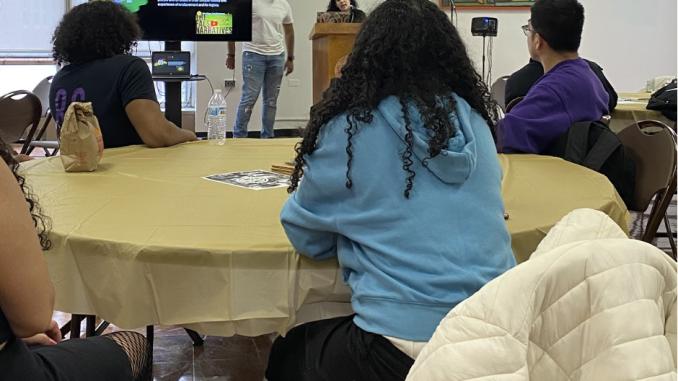
BY ANDRE RICKMAN
On Feb. 16, Black and Latinx students gathered at the Jefferson-Williams Lounge at Brooklyn College to take part in Brooklyn College’s Movimiento Estudiantil Dominicano’s (MEDO or Dominican Student Movement) “Let’s Talk about Anti-Blackness” forum.
Up for discussion at the meeting – the controversial Stop W.O.K.E bill by Florida governor Ron Desantis, which would limit classroom discussion about issues related to race and gender, including African-American studies.
MEDO’s main goal, they say, is to bring diversity and nuance when speaking about Dominican culture, and what many Black and Latinx communities can do better in addressing Anti-Blackness. The forum started with a direct, yet effective question.
“What does Anti-Blackness mean to you?”
The answers varied from being called names like “ghetto,” “uncivilized,” and “savages,” to issues of colorism. The point of this exercise was to get to know one another and learn what Anti-Blackness means to them.
Cassidy Van-Cooten, vice president and coordinator of MEDO, reminded Black and Latinx neighbors in attendance of the origin of Anti-Blackness.
“Anti Blackness in the U.S started with Chattel Slavery that began for 241 years, white people didn’t see it as a problem, one of the ways was dehumanizing black people using three-fifths compromise to give the idea that black skin was terrifying,” Van-Cooten said.
Van-Cooten is working to get students and the public to think about the origin of what Anti-Blackness is and what could Black and non-Black People of Color can do to unlearn harmful tropes.
The assembly’s core during the forum was putting the “I” into Anti- Blackness on the small, yet tangible things Black and Brown students can do to address these underlying issues.
Some examples include in the beauty industry – like how Black beauty brands are being represented and supported.
“Some Black beauty brands that deserve more praise and admiration include Taraji P . Henson’s hair products under the name TPH and Ouma Beauty, founded by Sharon Chuter. [These] can be used to help us as Black people take pride in our beauty,” said Renisha Connor, an attendee.
According to McKinsey, “Black brands make up only 2.5 percent of revenue in the beauty industry,” Black consumers are responsible for 11.1 percent of total beauty spending.”
Another topic the forum discussed was how colorism plays a factor into Anti-Blackness. An example includes how society often sees light skinned people being the face of Blackness as a whole.
“We want this meeting to acknowledge that when it comes to being a palatable hue there will be some privileges trickled down to you,” said Van-Cooten.
According to ColorismIsHealing.com, “Lighter-skinned people in general are far more likely to be positioned as barrier breakers, we saw this in the sphere of politics with Barack Obama and Kamala Harris, for example.”
The meeting allowed Black and Latinx students concerned about Anti-Blackness the space to voice their struggles and concerns.
